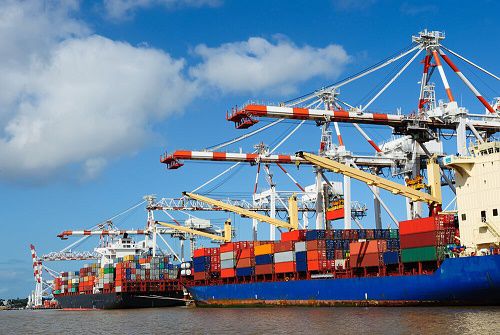A Place for Entrepreneurs to Share and Discover New Stories.
What is the history of freight forwarding?
This article unveils the rich history of freight forwarding, exploring its evolution from ancient trade routes to the modern digital era.

Throughout time, the logistics industry has witnessed remarkable transformations, with freight forwarding emerging as a key player in global trade. This article unveils the rich history of freight forwarding, exploring its evolution from ancient trade routes to the modern digital era.
1. Ancient Beginnings: The Birth of Trade and Transport
The origins of freight forwarding can be traced back to the ancient trading practices of civilizations such as the Egyptians, Phoenicians, and Romans. Merchants relied heavily on intermediaries, known as carriers or forwarders, to facilitate the transportation of goods across long distances.
2. Renaissance and the Rise of Formal Freight Forwarding
The Renaissance period brought significant advancements in global trade. The establishment of trade routes by explorers like Christopher Columbus and Vasco da Gama led to an increased demand for organized logistics solutions. During this era, formal freight forwarding practices started to develop, marked by the emergence of dedicated shipping companies and forwarders in major port cities.
3. The Industrial Revolution: Pioneering Change in Freight Forwarding
The 19th century Industrial Revolution revolutionized the freight forwarding industry. The advent of steam power, railway networks, and later the standardized shipping container transformed transportation methods and facilitated the growth of international trade. Forwarders adapted to these technological changes, providing comprehensive logistics services, including customs clearance, storage, and documentation.
4. Globalization and Technological Advancements
The second half of the 20th century witnessed a rapid increase in global trade and the globalization of supply chains. Freight forwarding played a vital role in managing the complexities of international logistics, acting as a bridge between exporters and importers. The advent of air cargo, intermodal transport, and digital communication further enhanced the efficiency and speed of freight forwarding operations.
5. Modern Era: Digital Transformation and Beyond
The 21st century witnessed a digital revolution that revolutionized freight forwarding practices. Advanced technologies such as artificial intelligence, blockchain, and IoT have enabled real-time tracking, improved supply chain visibility, and streamlined documentation processes. Additionally, e-commerce has significantly impacted freight forwarding by changing consumer behavior and increasing the demand for faster, more efficient global shipping solutions.
Conclusion
Freight forwarding has come a long way since its humble beginnings in ancient civilizations. From simple intermediaries facilitating trade to complex logistics providers, freight forwarders have adapted and thrived in the face of numerous challenges and opportunities. As we step into the future, the evolution of freight forwarding continues with the integration of innovative technologies, making it an indispensable component of the global supply chain.
